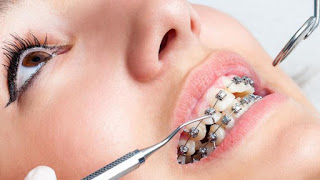Orthodontists: Transforming Smiles, One Tooth at a Time

Orthodontists are dental specialists who focus on diagnosing, preventing, and correcting misaligned teeth and jaws. Their effort is crucial to promote oral health, improving facial aesthetics, and enhancing standard of living. Unlike general dentists, orthodontists undergo additional training for being experts in guiding tooth and jaw alignment. Let's dive into what orthodontics entails, what treatments orthodontists provide, and exactly how their work benefits patients of any age.

What Does an Orthodontist Do?
An orthodontist focuses on aligning teeth and jaws to create functional and aesthetically pleasing smiles. They address issues like:
Malocclusion (misalignment of teeth): including underbite, overbite, crossbite, and open bite
Crowding and spacing: when teeth are so close together or have gaps
Jaw growth issues: typically treated in youngsters and adolescents to help proper jaw development
Their goal is to produce a balanced bite, reduce stress on teeth and jaw muscles, and enhance the patient’s dental health and appearance. They use various appliances and techniques to accomplish these results, many of which are advanced and created specifically for each patient’s unique needs.
Training and Education
Orthodontists begin their journey as dentists, completing a four-year dental degree. After that, they undertake 2-3 years of specialized lessons in orthodontics, focusing on facial development, tooth movement, and corrective treatments. This training allows them to develop the abilities necessary to handle complex alignment issues and design individualized treatment plans.
Common Treatments Offered by Orthodontists
Orthodontists provide a range of treatments tailored for the needs of patients spanning various ages:
Braces
Braces would be the most traditional and well known orthodontic appliance. They incorporate metal brackets and wires that apply gentle, consistent pressure to shift teeth to the desired position. Today, braces appear in several types, including metal, ceramic, and lingual (behind one's teeth), allowing patients to choose an option that best suits their lifestyle and comfort.
Clear Aligners
Aligners, like Invisalign, are getting to be a popular option to braces. Made from clear, removable plastic, these are less visible plus more comfortable. Patients wear a number of custom-made trays that gradually move teeth into place. Aligners are particularly preferred among adults seeking an even more discreet treatment option.
Retainers
Retainers are devices used as soon as the active phase of orthodontic treatment to maintain tooth alignment. Orthodontists often prescribe retainers in order to avoid teeth from shifting time for their original positions, making sure the effects of braces or aligners remain stable.
Orthopedic Appliances
For younger patients, orthodontists might use orthopedic appliances such as palate expanders to steer jaw growth. These devices will often be used before braces to produce more room inside mouth, minimizing the risk of severe alignment issues later in life.
Surgical Orthodontics
For some adults with severe alignment issues, surgical orthodontics, or orthognathic surgery, might be necessary. This treatment involves realigning the jaw bones to further improve both function and aesthetics. Orthodontists collaborate with oral and maxillofacial surgeons to execute these procedures, that may have transformative effects over a patient’s facial structure and bite.
How Orthodontic Treatment Can Improve Quality of Life
The impact of orthodontic treatment goes past appearance. Straight teeth as well as a proper bite can:
Enhance oral hygiene: Properly aligned teeth are easier to clean, reducing the potential risk of tooth decay and gum disease.
Improve chewing and speech: A correct bite improves the efficiency of chewing which enable it to prevent issues like slurred speech and lisping.
Reduce wear: Misaligned teeth can bring about uneven pressure and wear, which might eventually damage teeth, gums, and jaw joints.
Boost self-confidence: A beautiful smile can greatly enhance a person’s confidence and willingness to take part in social activities.
When Should You See an Orthodontist?
The American Association of Orthodontists recommends that youngsters see an orthodontist by age seven. Early evaluation helps orthodontists detect potential alignment issues and plan any necessary intervention at the right time. While orthodontic treatment is most common in kids and adolescents, adults comprise a significant percentage of patients seeking corrective treatments today. Modern advancements are making orthodontic care convenient, efficient, and open to adults of every age group.
Orthodontists play an important role in dentistry, creating healthy and beautiful smiles that serve you for a lifetime. Their specialized skills and comprehensive training enable them to treat a wide array of alignment issues, improving both function and search. Whether through braces, clear aligners, or retainers, orthodontist work to boost patients' lives by giving them something truly invaluable: the confidence to smile.
